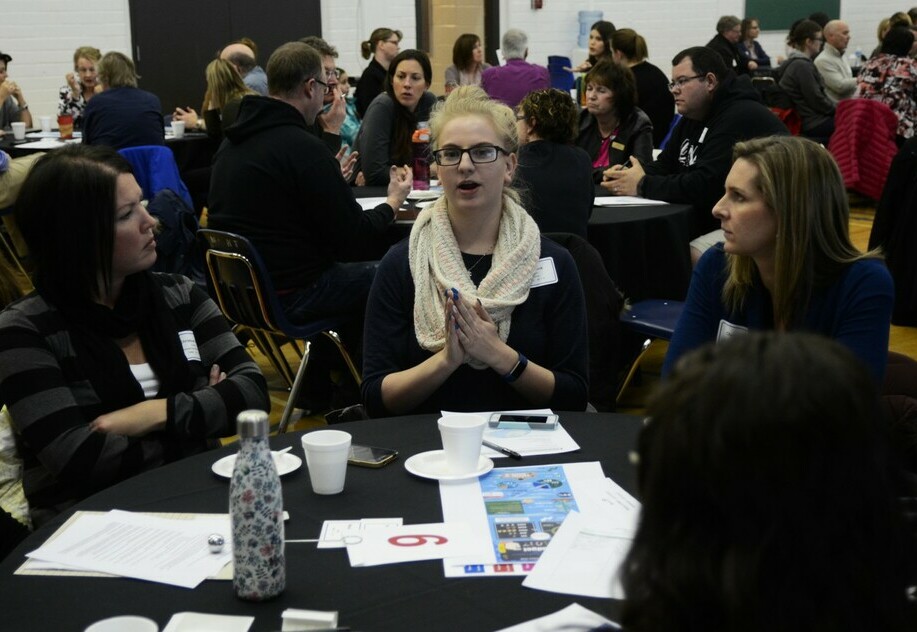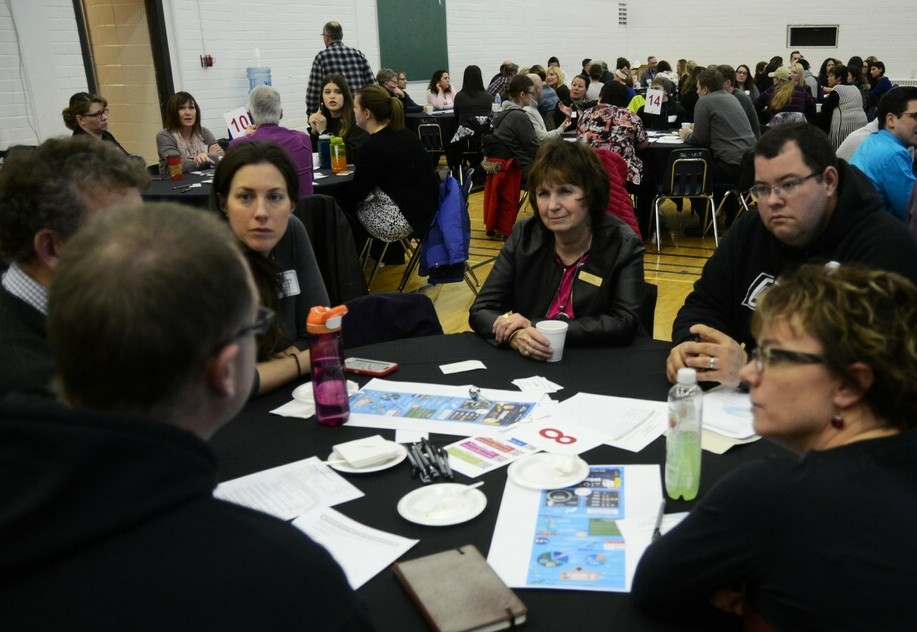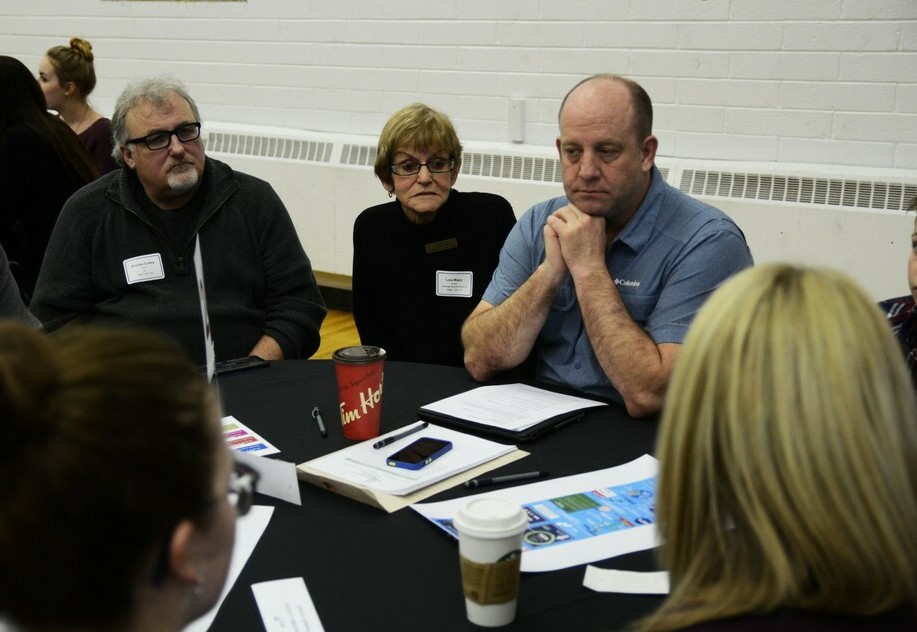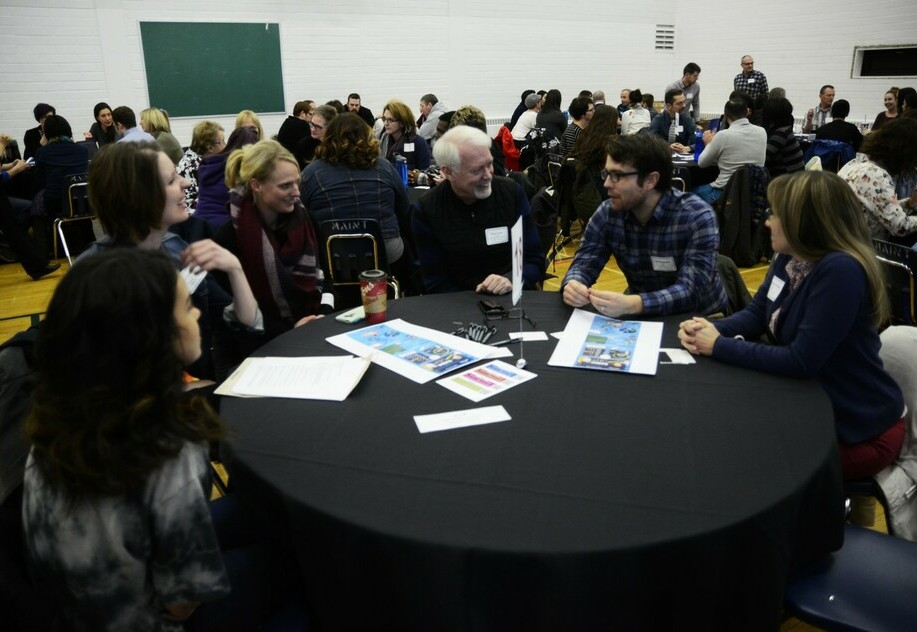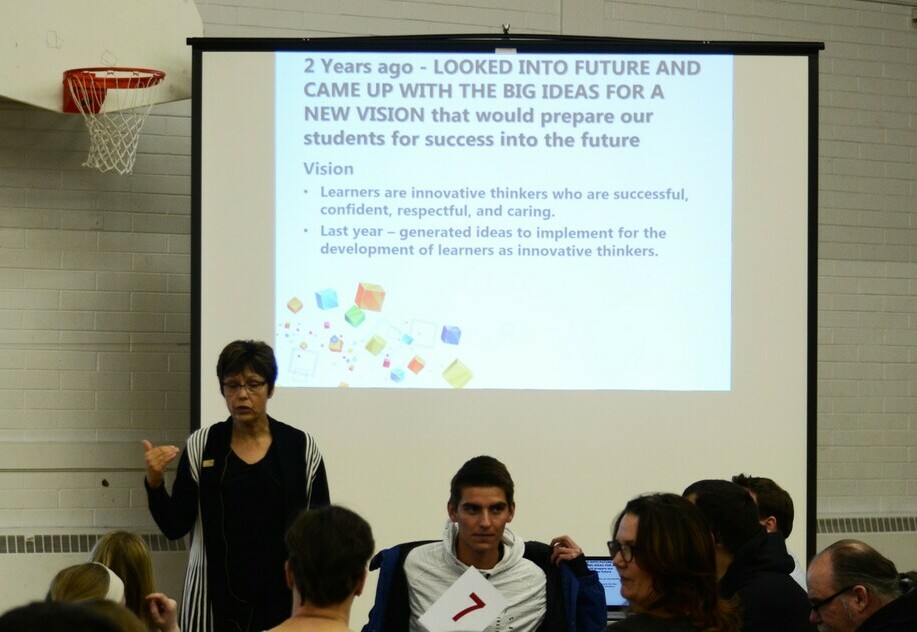Town Hall 2018
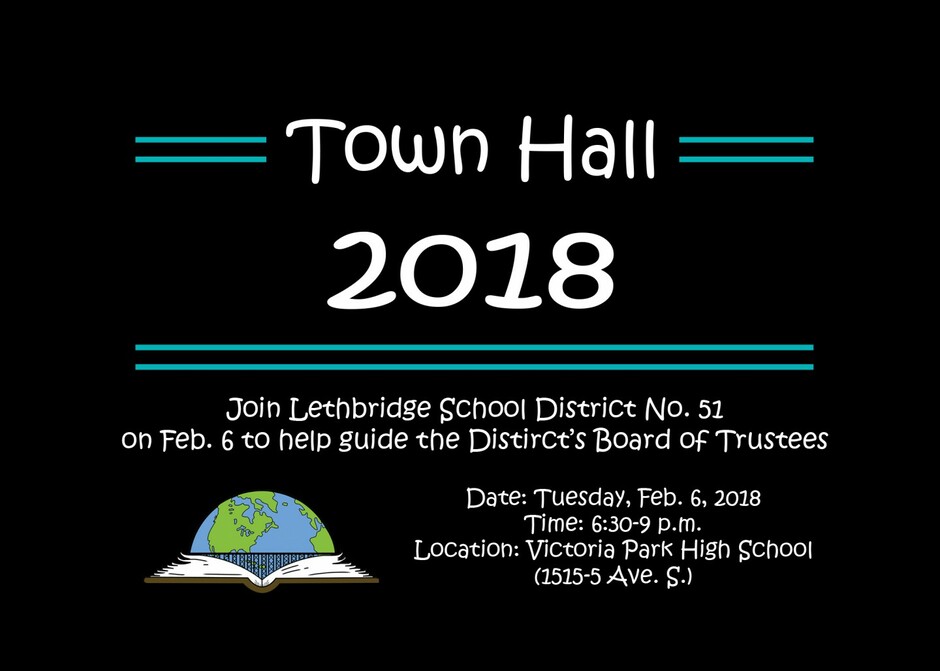
Town Hall 2018 for Lethbridge School District No. 51 all came down to two questions.
What is the School District doing well?
What can the School District do better?
Over 200 people gathered in the gym at Victoria Park High School Tuesday night to provide the Board of Trustees with answers to those questions.
Feedback collected at Town Hall 2018 will help Trustees establish priorities for 2018-19. This spring, the District embarks on the beginning of a new cycle for the three-year education plan. Trustees will use the data gathered at Town Hall 2018 to frame those discussions.
The two intentionally-simple questions were designed to maximize input. Through group discussion and the use of technology, participants shared ideas throughout the evening.
Those ideas were collated to produce a visual representation of the frequency of ideas, which were displayed on screens in the gym.
Going beyond the “big ideas,” participants were then asked to build actionable Ideas – strategies the Board can consider to address how to make the District better.
But Town Hall 2018 was not the only way community members, parents, students and staff contributed to the process. Stakeholders also had the opportunity to participate in an online forum on the District website.
Feedback
“WHAT CAN THE DISTRICT DO BETTER?”
The feedback received fell into six categories of thought: 1. Learning, 2. Inclusion, 3. Communication and Decision-Making, 4. Wellness, 5. Preparation for the Real World and 6. Structures.
We are now asking you to provide recommendations for actionable strategies in any of the categories listed above. In each category, there are themes that emerged three or more times.
Here is a recap of the feedback received, broken down into the four groups of town hall participants: Parents, Students, Staff and Community. The feedback represents the themes which were most popular within each category.
PARENTS
Learning: Themes included literacy, numeracy, transitions, technology, early learning and academics
Inclusion: Themes included inclusive communities, education assistants and programming
Communication and Decision Making: Themes included feedback, parent engagement and voice, communication
Wellness: Themes included safety, healthy foods, mental health, activities, counselling
Preparation for the Real World: Themes included volunteerism, transitions: work/school, financial literacy, responsibility
Structures: Themes included extra-curricular, lunch/recess, school start time, transportation, class size
STUDENTS
Learning: Themes included more options, more after-school activities, transitions,
Inclusion: Themes included inclusion – English Language Learners, culture
Communication and Decision Making: Themes included communication and support between schools, more communication,
Wellness: Themes included safe environments, mental health, counselling
Preparation for the Real World: Themes included financial preparation, prepare for independence
Structures: Themes included longer lunch, transportation, stricter rules (example - cellphones)
STAFF
Learning: Themes included numeracy, literacy, transitions, parent opportunities to support students
Inclusion: Themes included build staff capacity to address diverse needs, EAs, support model for all students
Communication and Decision Making: Themes included communication, decision-making
Wellness: Themes included healthy balance, mental health
Preparation for the Real World: Themes included volunteerism, life skills (finance), independence, pursuing passions
Structures: Themes included class size, secondary start times
COMMUNITY
Learning: Themes included numeracy and literacy, academic achievement
Inclusion: Themes included wrap-around services, inclusion policies (FNMI, LGBTQ policies)
Communication and Decision Making: Themes included collaboration among schools, consult/engage stakeholders with new programs
Wellness: Themes included mental health, balance
Preparation for the Real World: Themes included pathways (work/post-secondary/trades), volunteerism, financial literacy, leadership, career exploration
Structures: Themes included transportation
Please keep in mind, the District is looking for actionable strategies that are narrow enough that can result is an action being implemented.
Example:
Category: Learning
Theme: Technology
Actionable Strategy: Have students learn about safety and responsible use of technology at elementary school level.












